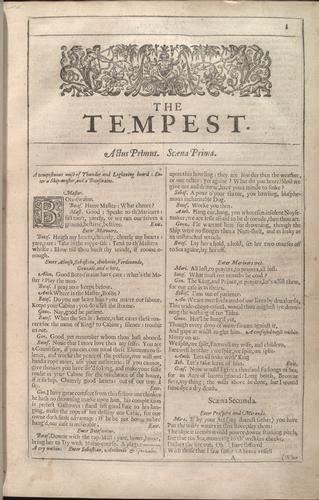 | William Shakespeare
Comedies, Histories, and Tragedies
London: Printed by Tho. Cotes for [John Smithwick, William Aspley, Richard Hawkins, Richard Meighen, and] Robert Allot,1632 | The Shakespeare first folio could be considered a commercial success. By the time that it sold out there was still enough demand to justify the printing of a second edition in 1632. It was printed by Thomas Cotes for a consortium of booksellers, of whom only William Aspley and John Smethwick remained alive from the first folio group. Most of the textual changes, aside from correcting obvious typographical errors, involved regularization of spelling and grammar to suit 17th century orthography.
Bequest of Mollie Harris Samuels |
|